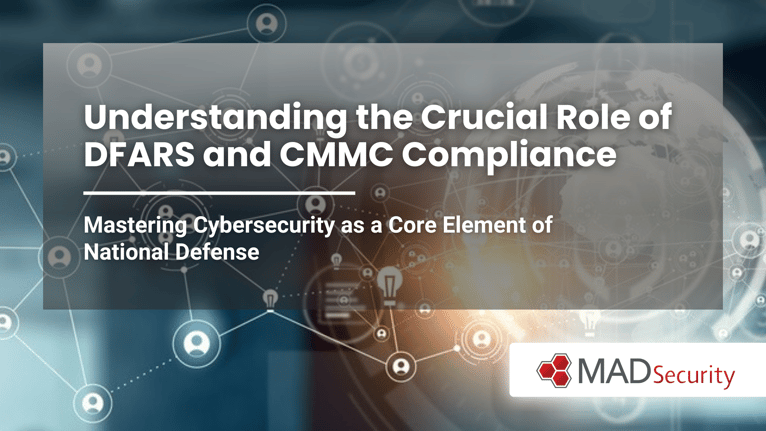
In our increasingly digital era, cybersecurity has transformed into an absolutely crucial part of national defense strategy. Defense Federal Acquisition Regulation Supplement (DFARS) and Cybersecurity Maturity Model Certification (CMMC) represent transformative initiatives aimed at fortifying the cybersecurity infrastructure of Defense Industrial Base (DIB) companies. These cybersecurity standards are often perceived as a mere exercise in compliance. However, numerous real-life cybersecurity incidents paint a different story, illustrating how these initiatives are not just about meeting regulatory standards, but about erecting a formidable line of defense to secure our nation’s future. In this comprehensive exploration, we delve into four notable cybersecurity incidents that underscore the indispensable role of DFARS and CMMC in safeguarding our national defense landscape.
RSA Security – The Domino Effect of Cybersecurity Breaches (2011)
RSA Security’s breach in 2011 brought to light the domino effect of cybersecurity failures. The breach not only affected RSA but also indirectly impacted a number of defense contractors. The intruders managed to steal data related to RSA’s SecurID product, which was subsequently used to launch cyber-attacks against defense contractors. This incident exposed the deep-seated vulnerabilities inherent within supply chains, an area that DFARS and CMMC explicitly address.

The incident demonstrated the cascading effects that a breach can have, particularly in interconnected supply chains. DFARS and CMMC address these systemic risks by promoting a comprehensive and unified approach to cybersecurity that strengthens every link in the DIB chain.
These standards mandate the implementation of robust cybersecurity measures across all levels of the supply chain, therefore ensuring that the security of one entity isn’t undermined by the vulnerabilities of another.
Titan Rain – The Rising Threat of Coordinated Cyber-attacks (2003-2005)
‘Titan Rain’ was a series of orchestrated attacks that targeted several DIB companies. The attacks spanned a two-year period and served as a chilling revelation of the growing threat posed by organized and persistent cyber threats. The attacks illustrated the urgent need for more robust defense strategies capable of countering sustained cyber espionage campaigns.
DFARS and CMMC promote a proactive and defense-focused approach in response to such coordinated attacks. They emphasize regular audits and continuous monitoring to detect and mitigate potential threats at the earliest. By enhancing resilience against sustained cyber-espionage campaigns, these standards help fortify national defense resources against increasingly sophisticated adversaries.
Operation Aurora – The Imperative to Protect Intellectual Property (2009-2010)
During ‘Operation Aurora,’ Chinese hackers targeted several prominent companies, including DIB contractors like Northrop Grumman. The primary aim of the cyber-attacks was to alter source code repositories and steal intellectual property. This incident highlighted the pressing need to secure sensitive intellectual assets against adversarial exploits.
CMMC, with its stringent focus on protecting Controlled Unclassified Information (CUI), plays a crucial role in this context. The standard outlines strict requirements for the handling, storing, and transmitting CUI, creating a robust barrier against threats like those exemplified by Operation Aurora. By enforcing strong access controls and stringent user authentication processes, CMMC can significantly minimize the risk of intellectual property theft.
Office of Personnel Management (OPM) Breach – The Imperative Need for Personal Data Security (2015)
The OPM breach in 2015 led to the theft of 22.1 million personnel records, marking one of the most significant government data breaches in U.S. history. The incident not only underscored the need for more stringent security measures for personal data but also highlighted the potential for catastrophic fallout when such measures are not in place.
Both DFARS and CMMC provide robust guidelines for secure data handling and enforce a strict cyber incident reporting system. These mandates aim to minimize the damage following a breach and facilitate a swift response to security incidents. By promoting best practices in personal data security, they can significantly reduce the likelihood of massive data breaches like the OPM incident.
Conclusion: Beyond Compliance – DFARS and CMMC as Cybersecurity Champions

These cybersecurity incidents, as alarming as they are, offer valuable lessons and highlight the urgent need for more stringent cybersecurity measures to safeguard our nation’s defense assets. These incidents serve as poignant reminders that DFARS and CMMC are not just about regulatory compliance; they are essential tools in our collective effort to protect national security.
DFARS and CMMC are much more than a checklist of compliance requirements. They represent a shift in mindset, encouraging businesses to view cybersecurity as a core tenet, rather than an ancillary function. They urge businesses to develop and maintain a mature cybersecurity posture that prepares them for the evolving threats of the digital age. Partner with MAD Security, your trusted cybersecurity consultant, to ensure that security and compliance become ingrained within your organization’s DNA.
Original Published Date: September 18, 2023
By: MAD Security

